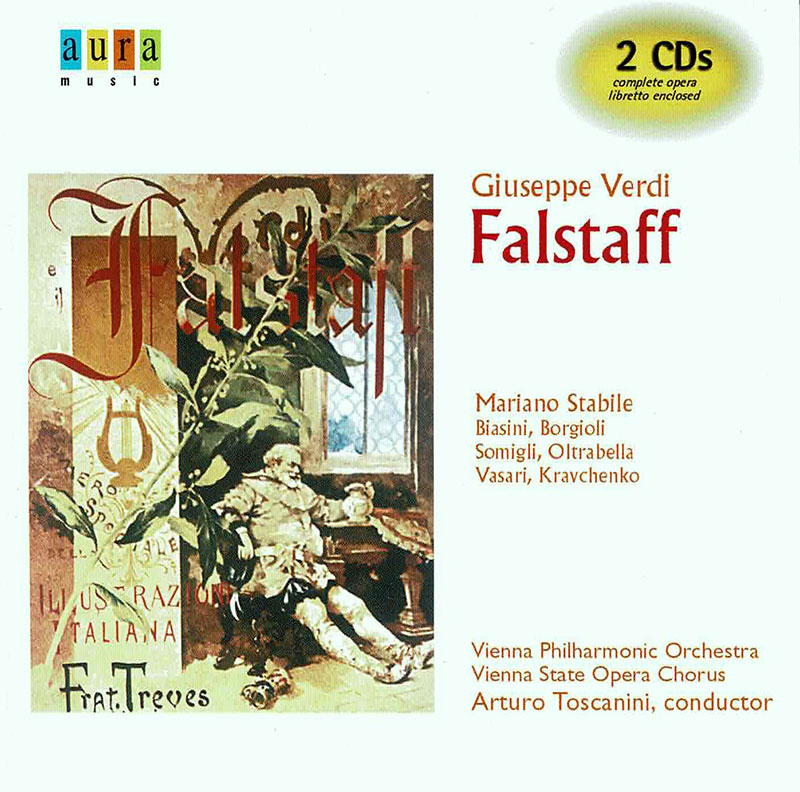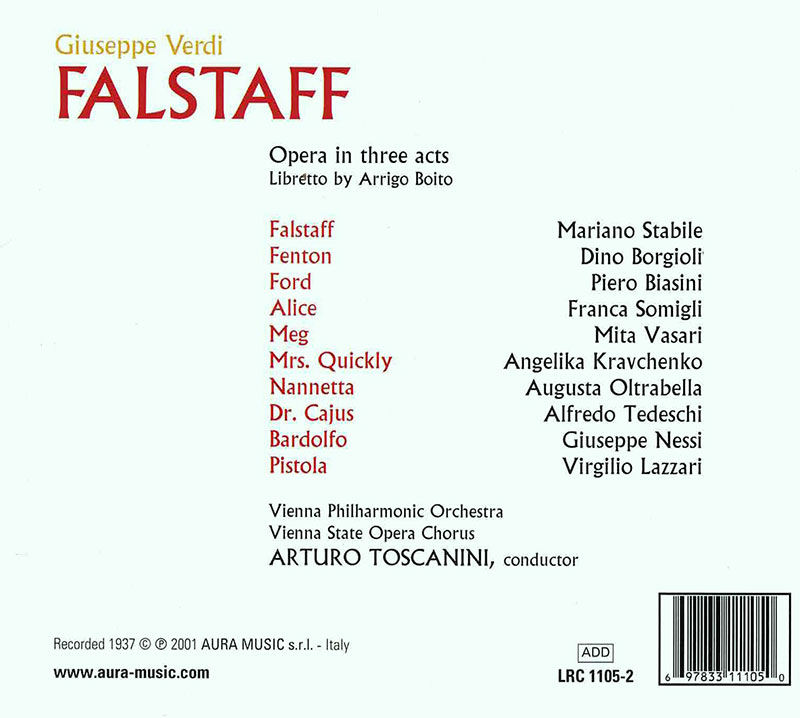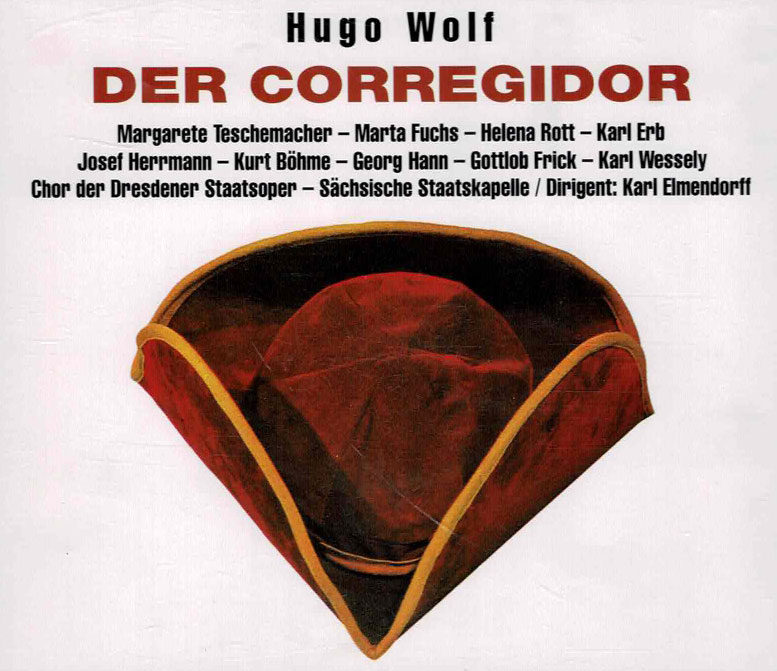Logowanie
Mikołaj - ten to ma gest!
Elton John, The Mamas & The Papas, Cat Stevens, Rod Stewart, Bobbie Gentry, Stevie Wonder, Engelbert Humperdinck
Memory Lane
Edycja Numerowana - 1000 egzemplarzy w skali światowej
RACHMANINOV, Eiji Oue, Minnesota Orchestra
Symphonic Dances / Vocalise
Best Recordings of 2001!!! NAJCZĘŚCIEJ KUPOWANA PŁYTA Z RR!
Karnawał czas zacząć!
Music of Love - Hi-Fi Latin Rhythms
Samba : Music of Celebration
AUDIOPHILE 24BIT RECORDING AND MASTERING
CHOPIN, LISZT, DEBUSSY, DVORAK, Gerhard Oppitz
Dances romantiques - A fantastic Notturno
Wzorcowa jakość audiofilska z Clearaudio
Winylowy niezbędnik
ClearAudio
Double Matrix Professional - Sonic
najbardziej inteligentna i skuteczna pralka do płyt winylowych wszelkiego typu - całkowicie automatyczna
VERDI, Dino Borgioli, Angelika Kravtchenko, Mariano Stabile, Vienna Philharmonic, Arturo Toscanini
Falstaff

Ostatnia opera Verdiego. Albo pierwsza, bo to zwiastun nowej epoki w dziejach muzyki operowej. Verdi, który u schyłku życia wrócił do swojego Roncole, by znów, jak w młodości, stać się chłopem z Sant'Agata uległ namowom Boita i napisał operę, która stała się dziełem sumującym jego wielki dorobek. Niezwykle nowatorskie rozwiązania formalne, wspaniała muzyka, a jednocześnie pełna wierności wobec verdiowskiej koncepcji teatro dramatico - jest wyzwaniem dla artystów i inscenizatorów. Jest też testamentem Verdiego. Przez całe życie zmagał się z Szekspirem, nieustannie wracał do niego, podziwiał jego geniusz, miał ambicję, aby mu dorównać. Filozofia Falstafa, jak się wydaje, stała się bliska Verdiemu, jego pojmowaniu świata i ludzi. W zdaniu kończącym operę stwierdza, że wszystko jest komedią, a na manuskrypcie, odnalezionym po latach przez Toscaniniego, znaleziono jakby dopełnienie tego zdania: idź, idź, bez względu na wszystko, idź swoją drogą. Tak właśnie żył, tak postępował. This remarkable recording, made at a full, live stage performance at the Salzburg Festival in August 1937, was the second of three performances given by Toscanini during the festival, during which time he also conducted Beethoven's Fidelio, Mozart's Die Zauberflöte and Wagner's Die Meistersinger von Nürnberg. In deciding to remaster it from the particular source available to me - six LP sides in a "private recording" set of discs issued by "Penzance Records", I was well aware of the potential inadequacies of the source material and thus the possible limitation of results. The main source for this recording exists as a selenophone film at the New York Public Library, and was the source for a recent CD issue (read more about the Selenophone in this 1990 NY Times article). With this unavailable to me, the decision to work from these LPs was taken after considerable investigation into their sound quality, when compared with both the newer transfers and other previous LP incarnations. It soon became clear that the Penzance transfers were actually very well made and apparently true to their source, with little or no filtering or other intervention, and thus provided an excellent source from which to work (they remain the favoured transfers of this recording for some Toscanini lovers). Even so, it was only after a considerable amount of XR remastering work and careful comparisons with other releases that I decided to go ahead and complete what has been a lengthy and difficult restoration (and would have been so regardless of the source). This would not have been contemplated had it not been clear to me that many significant sonic improvements might be had over all the previous issues I've been able to sample, something I believe has been achieved here. My aim was to really try and open out the sound - as with the majority of recordings of this era, regardless of recording medium, the frequency response was unbalanced and uneven. In some previous transfers this has been exacerbated by excessive filtering, particularly in the treble end, producing a distant and muffled sound. By contrast, the XR remastering approach has served to open out the top end considerably, as well as firming up the bass and giving the whole sound a much more solid dimension - something further enhanced in the Ambient Stereo version of this release. Naturally this also revealed further flaws in the original recording which then had to be tackled - hiss levels varied throughout the recording, from barely audible to quite intrusive, and I've tried to even these out as much as possible. I was also able to tackle a pitch variation which changed as the recording progressed, dropping by almost a quarter tone by the end of the opera. Clearly this is a live recording - footsteps are heard from the stage, soloists move around , occasionally slipping outside the direct pick-up range of the microphone (or microphones - I don't know if this was a single or multiple microphone recording) and thus heard somewhat distantly, though always audible. It's easy to underestimate the technical difficulties posed in recording such a performance today, let alone in 1937, just two years after the first commercial recording of an opera by Mozart - the fact that this incredible performance could be so well-captured is a testament to the skills of the radio engineers of the time. I hope that this new remastering will bring the listener a few steps closer to the impression this performance must have given to those lucky enough to be present for the performance. Andrew Rose






























